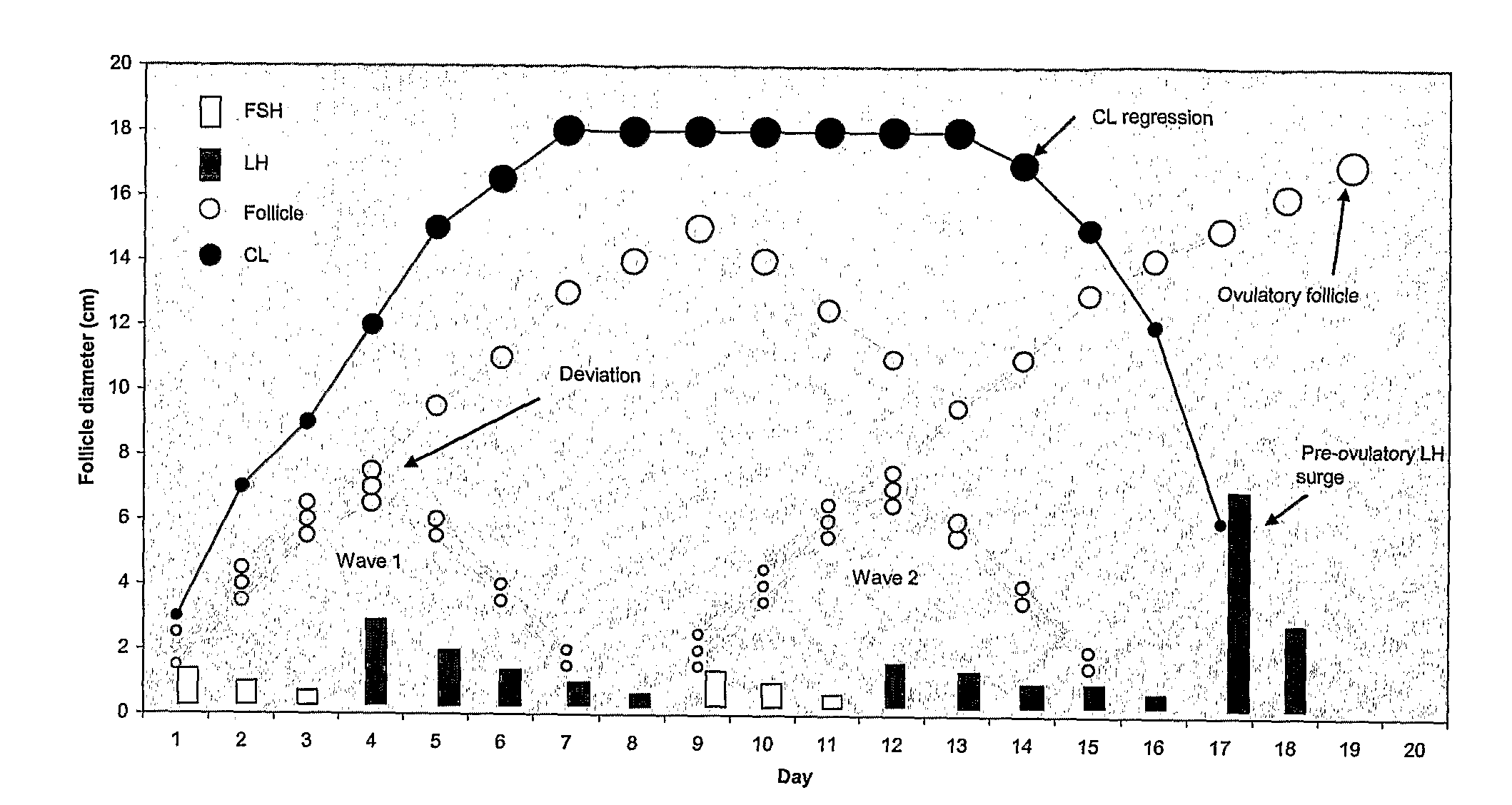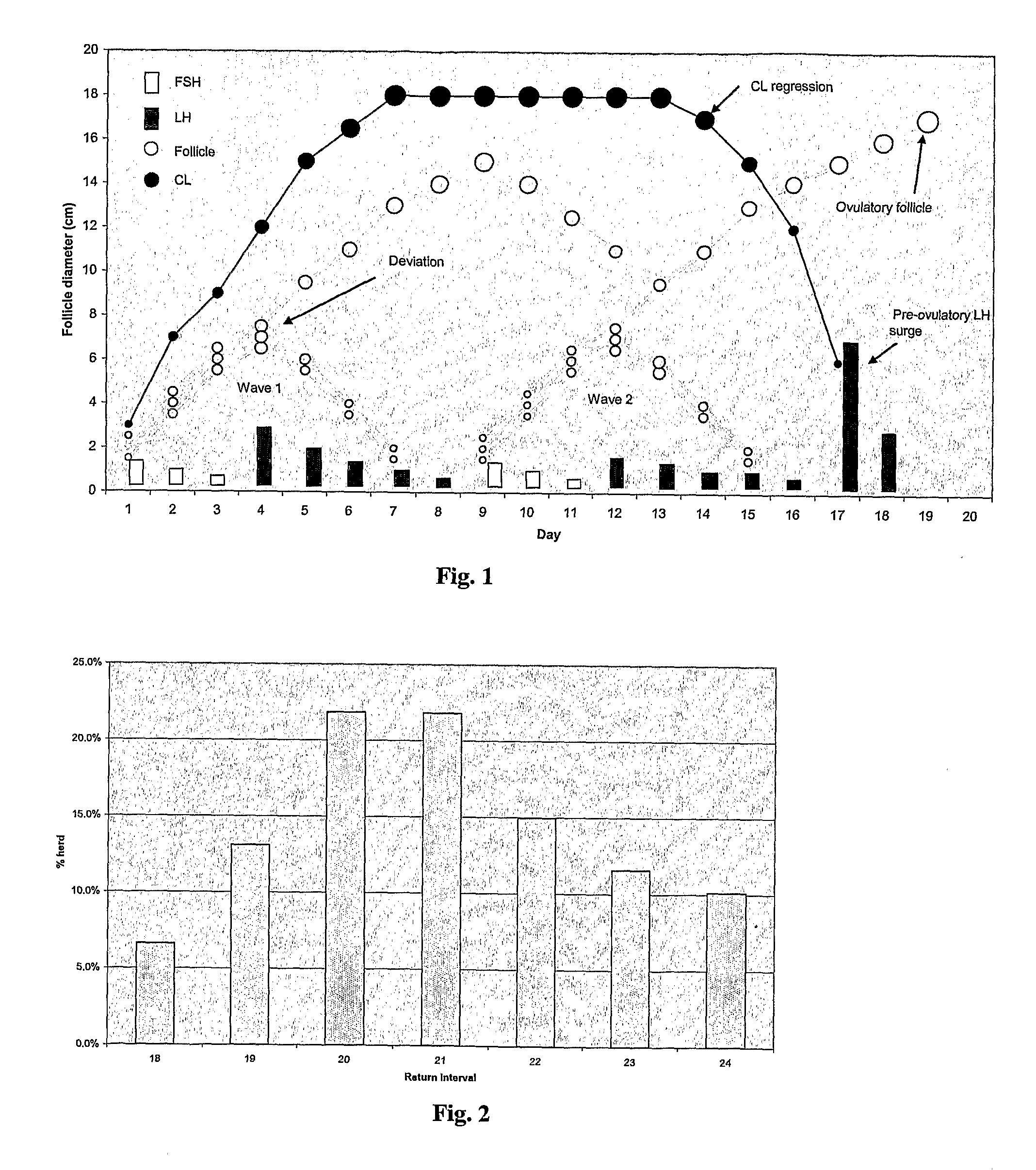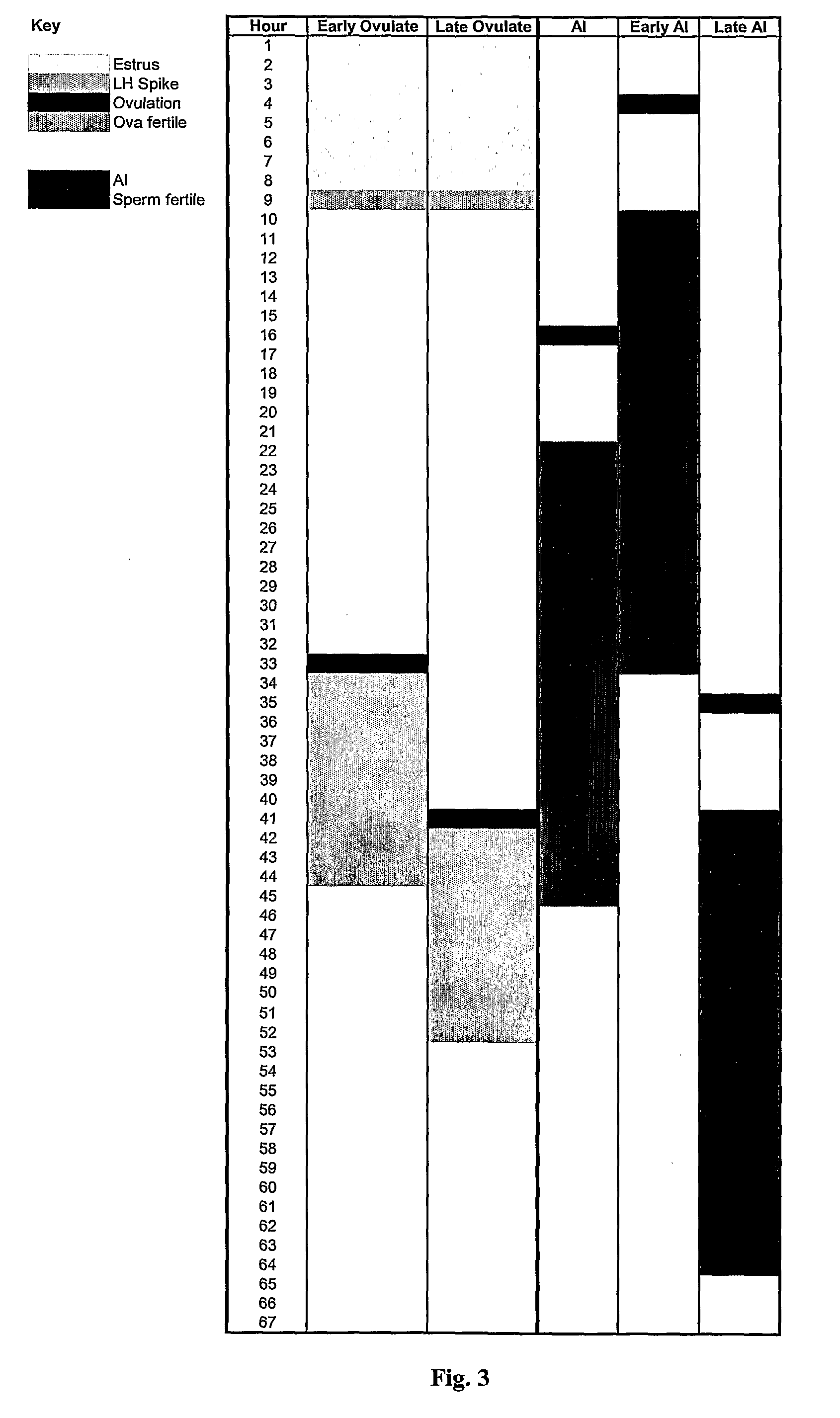Increasing pregnancy rates
a technology of increasing pregnancy rate and increasing which is applied in the field of formulation, can solve the problems of rapid destruction of the cl, cessation of progesterone production, and approximately 50% of the cows receiving these treatments becoming pregnant, so as to increase the probability of an animal becoming pregnant and increase the number of animals
- Summary
- Abstract
- Description
- Claims
- Application Information
AI Technical Summary
Benefits of technology
Problems solved by technology
Method used
Image
Examples
example 1
Improvements to the OVsynch Protocol
1. Introduction
[0383]The ‘OVsynch’, or GPG, oestrus synchronization protocol uses a combination of GnRH and prostaglandin, followed by fixed time insemination (FTAI). The usefulness of the protocol in whole herd synchrony programmes has been demonstrated in studies around the world and in a local field study conducted by Parnell Laboratories in conjunction with dairy veterinarians in Victoria in 2001. The application of OVsynch to the treatment and synchronization of anovulatory anoestrus (M) cows is supported by a small body of published work and the results of a major study in pasture-based cows in Australia and New Zealand conducted by Parnell Laboratories.
[0384]There is much discussion in the literature as to how to increase the number of cows that become pregnant as a consequence of the oestrus synchronization programmes.
[0385]A preliminary study was conducted in order to assess the possible synergistic effect of incorporation of a progestero...
example 2
Formulation of Product
[0418]In order to manufacture the product, it would be ideal if the GnRH and the progesterone were in the same injection. In order to achieve this, it is necessary to devise means by which to formulate two very different molecules into a stable formulation. GnRH is a decapeptide, i.e. a short protein containing ten amino acids. This material is particularly soluble in aqueous solutions. Progesterone on the other hand is a hydrophobic molecule that is soluble in non-aqueous solvents but not soluble in aqueous solvents.
[0419]A further requirement of the final formulation is that it be possible to sterilise the material by filtration through 0.2 μm filters. Neither the progesterone nor the GnRH can be sterilised by autoclaving as they are unstable to heat. In order to achieve a stable formulation, a large number of variables have to be tested.
[0420]The following examples illustrate the types of formulation that may be suitable.
Formulation 1
[0421]
MaterialmgProgeste...
example 3
Further Formulations
Process for all Formulations:
[0429]1) The Gonadorelin acetate was dissolved in the water.[0430]2) The first quantity of N-methyl-2-pyrrolidone was added to the solution obtained in step 1.[0431]3) The progesterone, benzyl alcohol and Plasdone C15 were dissolved in the solution obtained in step 2.[0432]4) Additional N-methyl-2-pyrrolidone was added was added to volume.
Materialmg(Kg)Progesterone BP / USP250125Gonadorelin Acetate0.10.05Benzyl Alcohol2010Plasdone C155025water5025N-methyl-2-pyrrolidone1727863.5N-methyl-2-pyrrolidoneTo 2.0 mLto 100 LProgesterone BP / USP250125Gonadorelin Acetate0.10.05Benzyl Alcohol2010Plasdone C155025water2512.5N-methyl-2-pyrrolidone1752876N-methyl-2-pyrrolidoneTo 2.0 mLto 100 LProgesterone BP / USP250125Gonadorelin Acetate0.10.05Benzyl Alcohol2010Plasdone C155025water105N-methyl-2-pyrrolidone1766883N-methyl-2-pyrrolidoneTo 2.0 mLto 100 L
PUM
| Property | Measurement | Unit |
|---|---|---|
| Density | aaaaa | aaaaa |
| Density | aaaaa | aaaaa |
| Density | aaaaa | aaaaa |
Abstract
Description
Claims
Application Information
 Login to View More
Login to View More - R&D
- Intellectual Property
- Life Sciences
- Materials
- Tech Scout
- Unparalleled Data Quality
- Higher Quality Content
- 60% Fewer Hallucinations
Browse by: Latest US Patents, China's latest patents, Technical Efficacy Thesaurus, Application Domain, Technology Topic, Popular Technical Reports.
© 2025 PatSnap. All rights reserved.Legal|Privacy policy|Modern Slavery Act Transparency Statement|Sitemap|About US| Contact US: help@patsnap.com



